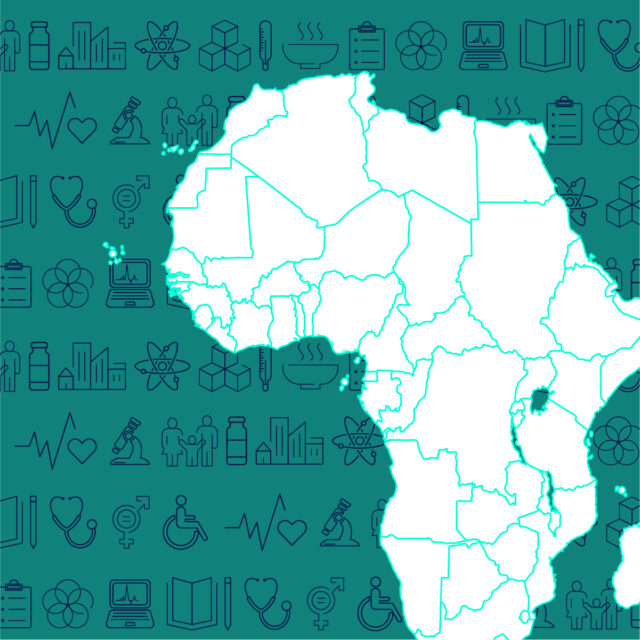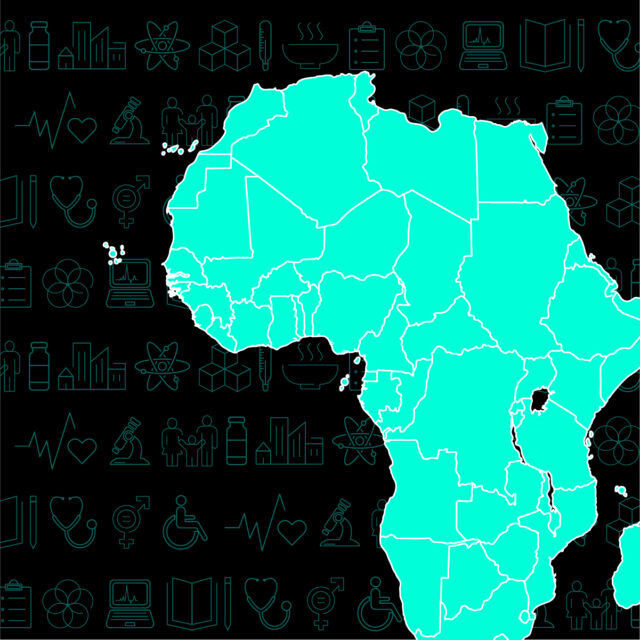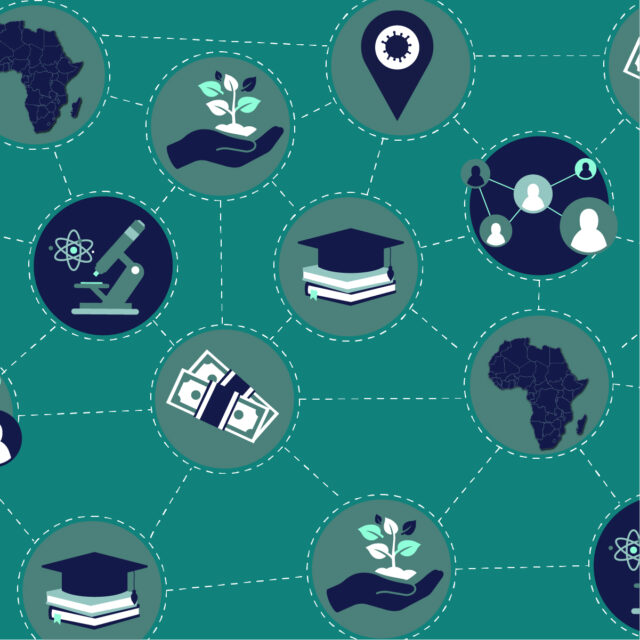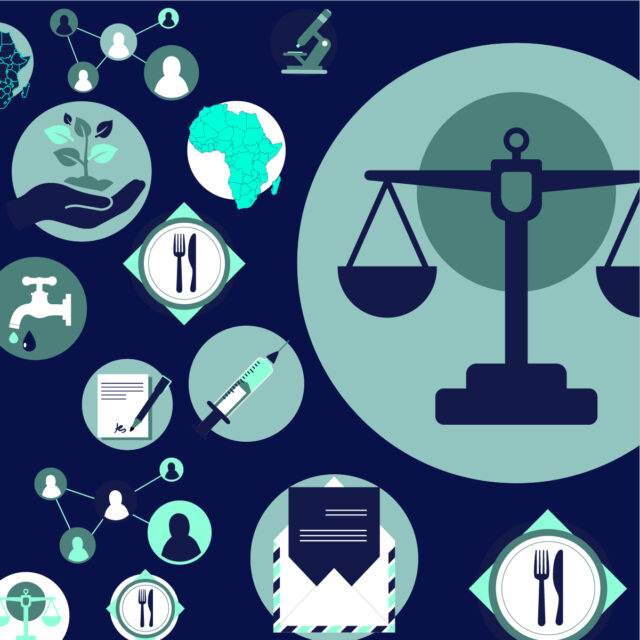Top news
Lost generation: Uganda’s schools reopened after nearly two years of COVID-19 closures – the longest in the world. More than 50% of students stopped learning as a result. One-third of students are expected to stay out of school, instead working to support their families. And many teachers have been lost to other professions. The situation is similarly dire in South Africa, where at least 775,000 students have dropped out and teen pregnancies have increased by 60%. The changing nature of the virus means it will continue to impact children, and schools will remain on the pandemic frontlines. The current generation of students risks losing $17 trillion in lifetime earnings as a result of pandemic-related school closures.
On the money: Sixty-five institutional investors managing over $3.5 trillion in assets are urging Pfizer, Moderna, AstraZeneca, and Johnson & Johnson to ensure equitable access to their COVID-19 vaccines. And to make sure it happens, they want to tie executive pay to vaccine equality. We love to see it. But it’s not just investors: Ireland’s President Michael D Higgins wrote to European heads of state calling on them to recognise the need to supply low-income countries with doses. Sounds like they’re finally listening to experts. Or maybe Olympic and Paralympic athletes speaking out did the trick.
Homemade solution: Tired of waiting for vaccine deliveries and receiving nearly expired doses, Nigeria has announced a plan to produce its own COVID vaccine. The country aims to vaccinate 70% of its population by the end of 2022 – which will require a tripling of its vaccination rate. Not only is localized vaccine production in Africa “good for the world”, it’s also a good step towards breaking down the pharmaceutical monopoly, which African experts have been calling for all along. Speaking of: we’re still waiting on that TRIPS waiver.
Modern(a) dilemma: Moderna’s shareholders were excited this week by the company’s announced projected sales of $17-22 billion in 2022. Stakeholders in global well-being have been less enthused with Moderna, which remains last out of major vaccine producers for doses shared. Moderna says it plans to develop an Omicron-specific booster shot, which sounds great — but it would be even better paired with a solidarity-based approach to vaccinating the world. Meanwhile, the UK government has spent £370 billion on fighting the pandemic at home. Compare that to the mere £50 billion spent by all countries on the global response. Feels a bit like leaders are making some empty promises.
Return on investment: The world is set to become more unequal amidst a global economic slowdown, with growth forecast to shrink from 5.5% in 2021 to 3.2% in 2023. Developing economies will be hardest hit because of the pandemic’s impact on inflation rates, global and local supply chains, employment, education, health, and food security. This will ultimately lead to increased tensions, within and across borders. Meanwhile, China – Africa’s largest bilateral lender – has signaled a slowdown in its lending to Africa. This could have devastating impacts, with the World Bank forecasting that vulnerable economies could see growth decline 7.5% from pre-pandemic levels. But in some places, the future is here: the South African tourism industry has already lost over 1 billion rand, while more than 50% of households in Nigeria have cut back on food due to pandemic-related wage cuts and inflation hikes.
Uh-O(micron): New research in South Africa suggests that Omicron may yield more asymptomatic cases than earlier variants, increasing its transmissibility and the likelihood of new variants. There’s already evidence of new variants, and Africa serves as a case in point for increased transmissibility, as the continent is recording record high daily cases. Cases are similarly breaking records in other parts of the world; the US recorded the all-time highest daily cases of 1.35 million on Monday. But the increase in cases on a continent where less than 10% of the population is fully vaccinated (versus over 70% vaccination rates in high- and middle-income countries) is more than a worry: it’s a disaster of the world’s making.
Back to the future: In some parts of the world, calls are growing to return to normal and to treat COVID-19 like an endemic disease, including ending mass vaccine campaigns 😱. Smells like privilege, because many countries have barely begun to vaccinate their populations with first doses — much less third doses. As South Africa’s Omicron wave subsides, President Cyril Ramaphosa is reevaluating drastic approaches to curb cases, but he’s also calling for a ramp up of vaccination, once again highlighting the startling divide in pandemic timelines between low- and high-income countries.
Speedbump: Early indications that Sinopharm and Sinovac vaccines may be less effective at preventing infection from Omicron is bad news for vaccine equity and ending the pandemic. Those two vaccines account for almost half of the world’s vaccinations and jointly are the second largest administered vaccine in Africa. AstraZeneca’s vaccine, the most widely administered in Africa, also fares worse against Omicron. The good news is they still appear to prevent hospitalizations and severe illness. Plus, we know the perfect destination for the 100 million Omicron-targeted doses Pfizer hopes to produce this year: Africa.
Too soon?: The WHO has come out against increasing calls to label Omicron as “mild,” with not enough evidence available yet to support the claim. WHO also noted that a shift to treating the disease as endemic would require stable and predictable transmission, which is not currently the case. This follows last week’s warning that Omicron is unlikely to be the last COVID-19 variant we face. One thing that certainly has been predictable during the pandemic is the failure of a state-based order to reliably respond to an international health crisis. 🤦🏾♀️
Killing time: The WHO hasn’t been able to get medical supplies to Tigray since July last year, an effective blockage with a dire humanitarian toll. At the same time, the biggest hospital in the region is running out of food, and others are simply closing due to lack of supplies – again, linked to the blockade.
The numbers
- 16% of girls aged 15 to 19 in Kenya who married during the first year of the pandemic felt they would not have been married if not for COVID-19
- $17 trillion: The lost lifetime earnings of the current generation of students negatively impacted by pandemic-related school closures.
- 1 booster shot is administered in Africa for every 802 boosters in the rest of the world.
- 12% of aid supplies needed in Tigray have actually made it, according to the World Food Programme.
More reads
- As children across Africa return to school this week, they might find a very different landscape to the one they left behind before the pandemic. Rasna Warah reports from Kenya.
- Advocating for climate justice: a ONE Youth Ambassador and activist reflects on what she learned from COP26.
- Apple and (RED) have renewed their partnership for 15 years in support of campaigns to fight HIV/AIDS and COVID-19 in sub-Saharan Africa.
- Activate your activism and see what’s needed to end the pandemic, urges Ben Phillips. Hint: it starts with T-R-I-P-S.
- Why trust matters and how to rebuild it after the pandemic.
- Biblical beginnings are trending in 2022, as locust plagues hit South Africa, with no end in sight.



